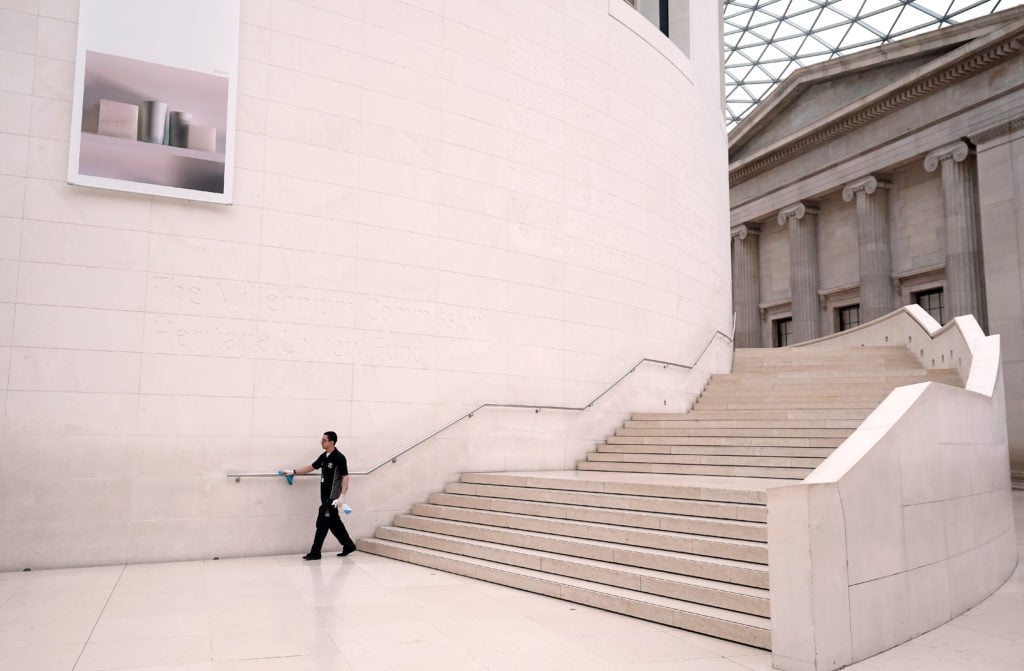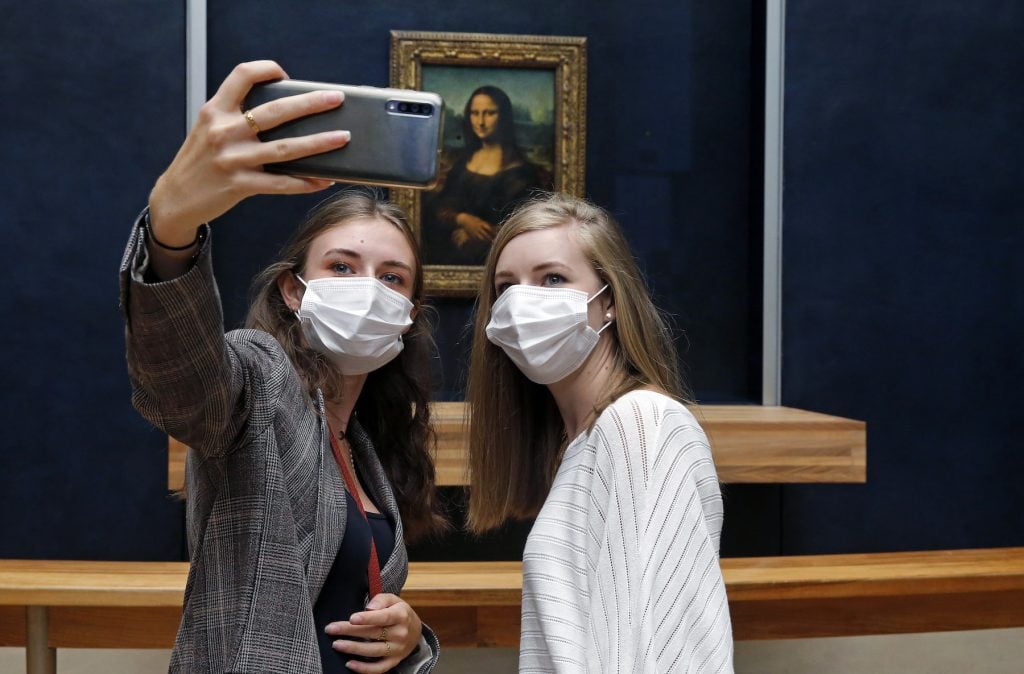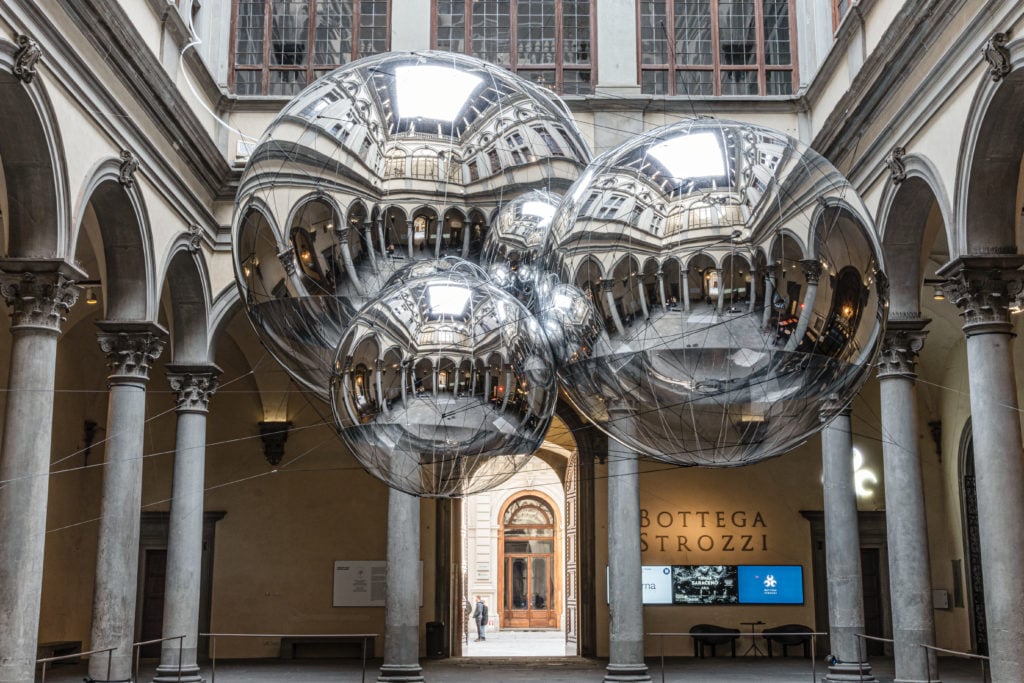Art World
Brussels Closes Museums as a Second Wave of Infections Sweeps Europe—and Other Cities Could Soon Follow Suit
The financial impact of a second lockdown could be devastating for Europe's cultural sector.

The financial impact of a second lockdown could be devastating for Europe's cultural sector.

Naomi Rea

The Belgian government has asked museums and public galleries in Brussels to close through November 19 in an effort to curb rising coronavirus infection rates, which have risen to their highest point since the beginning of the pandemic. Its capital city is one of the hardest hit regions.
A spokeswoman for the BOZAR Center for Fine Arts in Brussels tells Artnet News that the museum, which previously closed from March through May, was prepared for the decision. “We had several scenarios ready, and since we also saw the daily corona numbers rising, closing the Centre for Fine Arts was one of them,” she says.
The museum had just opened its fall exhibition program, which included a show of work by the Belgian painter Philippe Vandenberg that is now closed. It will continue to run its online BOZAR@HOME program, which it began during the first lockdown. “This period of closure is of course something we’ve hoped we shouldn’t have to do again, but we fully understand the reasons for these measures,” the spokeswoman says.
A spokeswoman for another Brussels institution, WIELS, tells Artnet News that the closure has “an immediate impact” on its revenue, and that it is working to mitigate that impact now and in the near future. During the first lockdown, the institution lost around €10,000 ($12,000) a week, and it has estimated that the new lockdown will cost them almost €40,000 ($47,000). The spokeswoman stressed, however, that the institution is most concerned about the impact it will have on on “all the external people we are working with such as artists, guides, technicians whose revenues are also depending on the vivacity of the art sector.”
Commercial galleries in Brussels are permitted to remain open for now.

A cleaner wipes down the handrails in the British Museum the day after Prime Minister Boris Johnson called on people to stay home and avoid all non-essential contacts and travel in order to reduce the impact of the coronavirus pandemic. Photo by John Walton/PA Images via Getty Images.
Museums and galleries around Europe are bracing for further restrictions as the infection rates rise to their highest levels yet. Institutions in Wales have been closed as the country implemented a two-week national “firebreak” lockdown that began October 24. Meanwhile, museums and galleries in Northern Ireland were asked to close on October 16 for four weeks.
So far, however, museums in England are taking a different approach. A spokeswoman for the British Museum tells Artnet News that it is staying open while London is under the country’s current Tier 2—the second highest—Covid alert level. “We are following government advice and will inform ticket holders if there are any changes that may affect their visit,” the spokeswoman says. She adds that the museum has advised visitors only to book tickets with people in their household or support bubble.
Even in cities in the North of England where the alert has been raised to its highest level, museums including Tate Liverpool have remained open, although they are also asking visitors not to visit with people outside of the rules.

Visitors wearing face masks take a selfie with the Mona Lisa at the Louvre museum. Photo by Chesnot/Getty Images.
Elsewhere in Europe, museums are facing increased uncertainty. On Sunday, France saw a new record of Covid-19 cases recorded in a single day, with 52,010 new infections confirmed. The country has already surpassed 1 million confirmed cases, and many parts of the country, including Paris, are under an overnight curfew. On Friday, French president Emmanuel Macron said it was “too early” to say whether the country faces another lockdown, but Macron is holding a series of emergency meetings this week to look into tougher measures.
A spokeswoman for the Louvre Museum in Paris says that the museum “will follow government directives and guidelines when they are announced.”
In Italy, which was the epicenter of the pandemic in Europe during the spring, the government has ordered restaurants, bars, gyms, and cinemas to close again on Monday, prompting clashes between protesters and police in several northern cities. So far museums have been permitted to remain open. The director of Florence’s Palazzo Strozzi, Arturo Galansino, tells Artnet news that the museum, which is currently showing an exhibition of the Argentinian artist Tomás Saraceno, is “perfectly safe.”

Tomás Saraceno, Aria installation at Palazzo Strozzi, Firenze; Photograph ® Studio Tomás Saraceno 2020.
“We don’t know the next steps of the government, but we are prepared for any decisions with a special project for this difficult time,” Galansino, who oversaw a rapid response shutdown of the museum in March, says. The museum is organizing a project by the Italian artist Marinella Senatore geared toward reinforcing a sense of community. Titled “We rise by lifting others,” the project includes a large courtyard installation (the museum’s courtyard remained open throughout the previous lockdown) and a cycle of online workshops.
In Germany, which has been largely praised for its response to the pandemic, chancellor Angela Merkel has warned that the country is on the brink of losing “control” over the virus. A spokeswoman for the Museum Ludwig in Cologne has said that the museum is not currently preparing to close, although she stresses that they will “of course” do so should Merkel and the prime ministers of Germany’s federal states impose a second lockdown.
A new round of closures could be devastating to cultural institutions, many of which are already on the brink of financial ruin. Even as museums have reopened, and with many receiving government support, visitors have been slow to return, which has deepened the financial impact of the crisis.